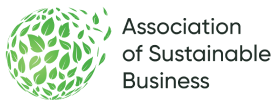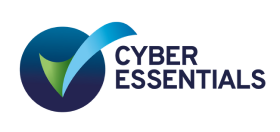Get off on the right foot
Users are quick to frustrate if they can’t quickly find what they are looking for on your website, and this has real financial implications. It adds up in terms of team costs - stakeholders and content managers who struggle to accomplish their day-to-day content publishing roles - as well as client costs - external users who drop out from frustration. That’s staff time as well as loss of custom. Then there’s the financial costs of fixing it after you’ve got a fully operational website. Needless to say, the cost of getting UX wrong isn’t cheap.
But this article series isn’t about what you’re doing wrong. It’s about what you can do to get it right. We’re going to talk through our own UX process from start to finish so you can understand what you’re buying into and why it works. Getting things right also takes time and financial investment, but the return is worth it.
Discover discovery
At the outset of every new relationship with our clients, we find out exactly what their needs and wants from their web platform. To get that information, we undertake a process of discovery. Discovery creates the foundation of knowledge and understanding not only to create the project scope but often also to define a bigger digital strategy, with user experience at the center. UX is fundamental right from the get-go because ultimately who uses the platform and how they use it are what make it a success.
Objectives during discovery include understanding brand positioning and of course understanding what the business actually does. But it’s also to gain a deeper appreciation of the existing habits and mindsets of the target audience, in order to build a digital product around these expectations. Additionally, the initial project brief often includes assumptions about what problems should be solved. These assumptions should be challenged and accounted for before any technical scope is defined.
From the outset, sessions include a diverse team of stakeholders who are able to represent a spectrum of views from within the business. Then later on, we enlist subject matter experts from around the organisation to gain more detailed business insights. We dig into their areas individually, uncovering organisational process and customer touchpoints—ways customers come into direct contact with the business. All of this information goes on to steer the true direction of the digital brief.
Colouring the canvas
One of our first activities is to create a business model canvas, which helps us understand your business model, whom it serves and how it does so. Or at least, it’s an overview of what you think the answers are to those types of questions! Knowing what the key relationships and activities are allows us to break out into those crucial subject matter expert conversations.
Card sorting and other similar activities help teams create the blueprint for the information architecture and content strategy. This categorises content according to how users expect to find it. This creates a hypothesis for how a web platform could be organised, which is later tested with users. Some supermarkets put the cream near the milk and some put it near the chilled desserts. How the decision-maker associates products affects the result.
It’s also important to understand what success looks like within your own industry. If every supermarket in your region puts the cream with the milk, and you decide to put it with the chilled desserts, you will have a lot of new customers wondering where the cream is on their first visit. Their journey will be disrupted, they will have to access help, or they may leave without buying any cream.
These in-depth sessions also should hopefully uncover any particular areas of concern that the old web platform is either causing or, at the very least, isn’t helping. Stalled lead generation, disjointed communications, unclear marketing strategy… once identified, these issues can be addressed within the project objectives.
Quba qualified
What we bring to this process is a lot of experience. We’ve been through it with many clients, from a wide range of sectors. We apply that broad industry and market view to a short, sharp, focused look at a single business - your business - so we can create a path forward for you with confidence.
By the time the sessions are finished, we have, and we present back to you, a full understanding of your business and your brand, project objectives based on the needs of your users and a research plan to take us all forward. This research plan will help us clarify who exactly is using the website, and we will create some user personas to keep in mind when making decisions.
We will also have addressed the initial assumptions which came up in the earliest part of our meeting or in the project brief about the scope of the project and what exactly is going to be delivered at the end. As the project continues, objectives may shift. That’s natural; priorities change. But having a good grasp at the outset of what must happen, what should happen, and what would just be nice to have is a very good guide for subsequent decisions.
If you want to talk through the discovery process in more detail, give us a call.
Related Articles
Get more of this by subscribing to our regular newsletter
 Amy Willoughby
Amy Willoughby





